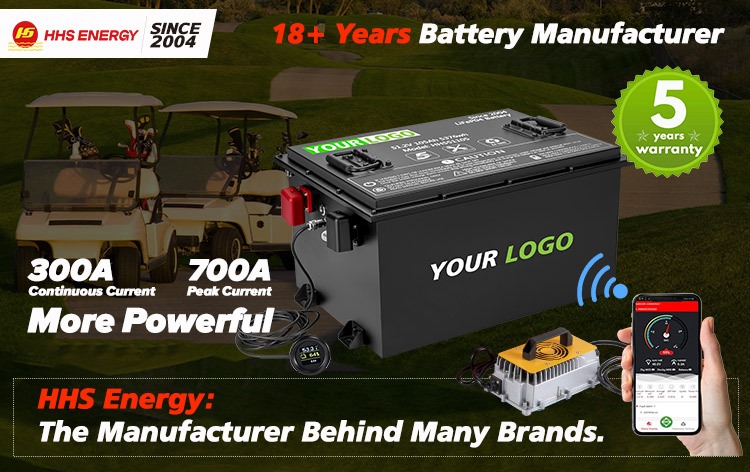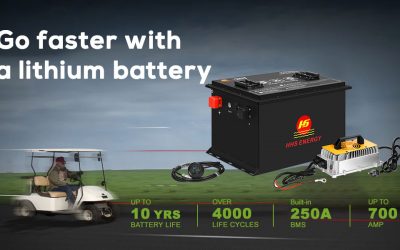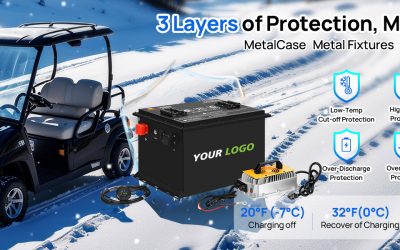36V Battery for Golf Cart: Why LiFePO₄ Is the Best Choice

Upgrading to a 36V LiFePO₄ (Lithium Iron Phosphate) battery is one of the smartest improvements you can make to your golf cart. Whether you use your cart for everyday rounds, for work, or in extreme weather, LiFePO₄ batteries deliver distinct advantages over traditional lead-acid types.
Below is everything you need to know: how 36V LiFePO₄ compares, what benefits you get, how to choose the right one, and what to watch out for.
1. What Does “36V LiFePO₄” Mean?
-
36V refers to the nominal voltage of the battery system — common in older or mid-range golf carts. Many carts originally use 3 × 12V lead-acid batteries wired in series to produce ~36 volts.
-
LiFePO₄, or Lithium Iron Phosphate, is a lithium battery chemistry known for its stability, safety, high cycle life, and consistent performance over time.
Putting them together, a 36V LiFePO₄ battery means your cart will be powered by a lithium pack designed to deliver ~36 volts with all the benefits that lithium cells bring.
2. How LiFePO₄ Stacks Up vs Lead-Acid in 36V Systems
Here are some comparisons based on real data:
| Feature | 36V LiFePO₄ | 36V Lead-Acid |
|---|---|---|
| Cycle Life (to ~80% capacity) | ~2,000–5,000 cycles | ~300–1,000 cycles |
| Weight | ~30–40 kg for 100Ah kits | Often double that or more for equivalent Ah capacity |
| Usable Energy / Depth-of-Discharge (DoD) | Up to 90–100% usable safely | Recommended around 50% to avoid damage |
| Charging Time | Faster recharge (often 3–6 hrs, depending on Ah and charger) | Slower (often 8–12 hrs) |
| Temperature Performance | Maintains better capacity in cold; tolerates a wide range | Loses much more capacity in cold, risk of freezing in lead-acid electrolyte |
3. Key Benefits of 36V LiFePO₄ for Golf Carts
From the research and usage cases, here are the biggest advantages that 36V LiFePO₄ batteries offer:
-
Longer Lifespan – You’ll replace the battery far less often. Many LiFePO₄ systems retain most of their capacity well past 3,000 cycles.
-
Lower Maintenance – No need to top up water, no acid leaks, no need for periodic equalization that lead-acid requires.
-
Consistent Power – Less voltage sag under load. This is especially noticeable when going uphill or carrying heavier loads. The cart maintains more of its speed and torque.
-
Lighter Weight – Less battery weight means less strain on the drivetrain, better acceleration, less wear on tires, and more usable payload.
-
Energy Efficiency – Higher charging/discharging efficiency, less waste, better performance even as the battery ages. Also, LiFePO₄ holds charge better when idle.
-
Safety & Durability – LiFePO₄ is well-known for being thermally stable, less risk of overheating or thermal runaway, especially when compared to some other lithium-ion chemistries or poorly maintained lead-acid batteries.
4. Possible Trade-Offs / What to Watch Out For
While LiFePO₄ 36V systems offer many benefits, there are some considerations and potential drawbacks:
-
Higher Upfront Cost – Lithium battery packs are more expensive than equivalent lead-acid sets initially.
-
Charger Compatibility – You’ll need a charger that is rated for LiFePO₄ and 36V systems. Using an inappropriate charger can damage the battery or cause safety issues.
-
Temperature Sensitivity During Charging – Charging at very low temperatures (below ~0°C / 32°F) can be harmful unless the battery has built-in heating or temperature compensation.
-
Battery Management System (BMS) Importance – A good BMS is essential. It monitors temperature, over/under voltage, cell balance, etc. Cheap packs with poor BMS can reduce battery lifespan.
-
Weight & Size Trade-Offs – Although LiFePO₄ is lighter than lead-acid, within lithium packs differences exist: Ah capacity, casing, cooling features can add weight/size.
5. How Much Range You Can Expect
Here’s a breakdown of approximate ranges you can get with 36V LiFePO₄, depending on Ah capacity, terrain, and load:
| Battery Capacity | Typical Range Flat Terrain | Range With Moderate Hills / Load |
|---|---|---|
| 36V 50Ah | ~10-15 miles | 8-12 miles |
| 36V 80Ah | ~18-25 miles | 14-20 miles |
| 36V 100Ah | ~25-30+ miles | 20-25 miles |
These numbers assume a well-maintained battery, moderate speed, thoughtful driving, and proper charging.
6. Choosing the Right 36V LiFePO₄ Battery
If you’re thinking of switching to LiFePO₄, here are key specs and features to check:
-
Amp-Hours (Ah) — determines how far you go between charges.
-
Cycle Ratings — how many full charge/discharge cycles you can expect before capacity drops significantly.
-
BMS Protections — over-charge, over-discharge, temperature, short circuit.
-
Charger Compatibility — make sure your charger matches the voltage, current, and has LiFePO₄ profile.
-
Operating Temperature Range — especially if you live in hot or cold climates.
-
Physical Size & Mounting — space in the battery compartment; cables, connectors.
-
Warranty & Support — good warranty terms matter; brands with reliable customer service are better.
7. Real-World Examples & Use Cases
-
Golf course fleets with many carts using 36V LiFePO₄ report greater consistency round after round, especially on hot or hilly courses. The reduced maintenance and replacement cycles lead to lower lifecycle costs.
-
Utility carts or neighborhood transport carts benefit from lighter batteries: better acceleration, less strain on motors.
-
Off-peak or seasonal users find that LiFePO₄ holds charge better during idle periods.
8. Summary: Is It Worth It?
In most cases, the switch to 36V LiFePO₄ batteries is highly worthwhile if you:
-
Use your golf cart frequently
-
Want better performance under load or hills
-
Dislike the regular maintenance of lead-acid batteries
-
Want longer lifespan and lower total ownership cost
If your usage is very occasional or if budget is tight short-term, the upfront cost might feel steep. But in 2-4 years, savings in replacements, maintenance, electricity, and the convenience tend to outweigh the initial investment.




